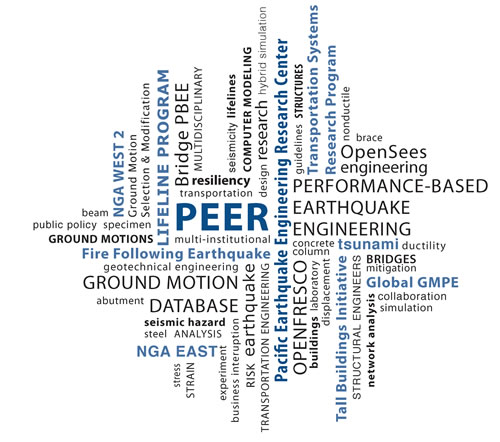What is PEER?
The Pacific Earthquake Engineering Research Center (PEER) is a multi-institutional research and education center with headquarters at the University of California, Berkeley. Investigators from over 20 universities, several consulting companies, plus researchers at various State and Federal government agencies contribute to research programs focused on performance-based earthquake engineering in disciplines including structural and geotechnical engineering, geology/seismology, lifelines, transportation, risk management, and public policy.
The PEER mission is to develop, validate, and disseminate performance-based seismic design technologies for buildings and infrastructure to meet the diverse economic and safety needs of owners and society. PEER's research defines appropriate performance targets, and develops engineering tools and criteria that can be used by practicing professionals to achieve those targets, such as safety, cost, and post-earthquake functionality.
In addition to conducting research to develop performance-based earthquake engineering technology, PEER actively disseminates its findings to earthquake professionals who are involved in the practice of earthquake engineering, through various mechanisms including workshops, conferences and the PEER Report Series. PEER also conducts Education and Outreach programs to reach students, policy makers, and others interested in earthquake issues.
PEER was established as a consortium of nine West Coast Universities in 1996 and gained status as a National Science Foundation Engineering Research Center in 1997. PEER graduated from NSF Funding in 2008 and is now supported by federal, state, local and regional agencies together with industry partners. Despite this funding shift, PEER continues to grow and remains an active earthquake engineering research center with a wide spectrum of technical activities and projects. PEER now has eleven Core Institutions and also actively involves researchers, educators, students, and earthquake professionals from across the US and worldwide.


